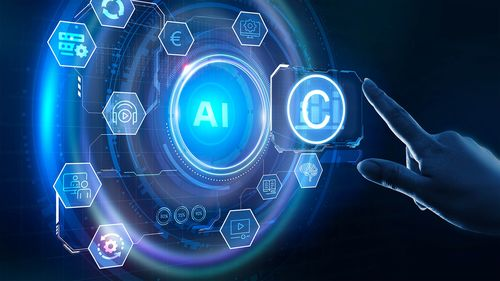Now in its twelfth year, Class 46 is dedicated to European trade mark law and practice. This weblog is written by a team of enthusiasts who want to spread the word and share their thoughts with others.
Click here subscribe for free.
Who we all are...
EUIPO publishes copyright and GenAI study
 EUIPO has published a study titled “The development of Generative Artificial Intelligence (GenAI) from a Copyright perspective". It is available to download on the EUIPO website here.
EUIPO has published a study titled “The development of Generative Artificial Intelligence (GenAI) from a Copyright perspective". It is available to download on the EUIPO website here.
The purpose of the study is to deepen the general understanding of GenAI's technical functioning, as well as existing and developing solutions underlying the application of EU rules on copyright and AI.
It is based on desk research, interviews with experts and analysis of technical solutions and practices. The study was conducted in close collaboration with relevant European Commission services.
The study centres on three areas: (1) The use of copyright-protected works as training data for GenAI models, (2) the generation of new content by these systems, and the legal questions this raises, and (3) the wider implications for creators, AI developers and the copyright ecosystem.
Its key findings are:
- Access to high-quality content is central to the development of GenAI services. The AI training process is complex and uses content as input at different stages. However, as GenAI models are “specialised” for certain functionalities they need access to high quality and up-to date content, which is reflected in emergence of a direct licensing market, with some GenAI developers licensing access and use of high-quality content from copyright holders. The capacity for copyright holders to effectively reserve their rights is a pre-requisite for the licensing market to develop.
- No ‘one-size-fits all’ solution for copyright holders to protect their rights has emerged yet. Instead, different approaches and solutions are developing for copyright holders to protect their rights, and for AI developers to respect their regulatory obligations: On the one side, the rights reservation mechanisms for the INPUT phase (related to training AI models), whereby rightsholders can express their opt out from the ‘text and data mining’ (TDM) exception. On the other side, transparency measures exist for the OUTPUT phase that allow the indication and recognition of AI generated content.
- Public authorities, such as national IP authorities and the EUIPO, may play a role by providing technical support (for copyright holders to reserve their rights, and for AI developers to effectively respect such reservations) as well as non-technical support (e.g., public awareness, forums for technical information sharing, providing information to the public on available solutions, trends and developments).
Since 2012, the EUIPO has been managing the European Observatory on Infringements of Intellectual Property Rights, with the mission of improving the understanding of the scope and impact of infringements of IP rights, including industrial property rights, copyright, and rights related to copyright.
In the field of copyright, the EUIPO is already responsible for establishing and managing the EU orphan works database (since 2012) and the public single online portal for out-of-commerce works (since 2019). It will launch the Copyright Knowledge Centre in November 2025.
“This report offers essential insights into the intersection of copyright and Generative AI. Its strength lies in its practical orientation. It provides policymakers, rightsholders, AI developers, and intermediaries with concrete data, legal analysis and recommendations on how IP offices such as the EUIPO can play their part in improving the status quo. It highlights where legal certainty is needed, where technical and licensing solutions can be improved, and where deeper cross-sector dialogue is essential. This is not just a study – it is a call to coordinated, forward-looking action”, said João Negrão, the EUIPO Executive Director.
Picture from EUIPO website
Posted by: Blog Administrator @ 10.35Tags: copyright, AI, GenAI, EUIPO,


 Sharing on Social Media? Use the link below...
Sharing on Social Media? Use the link below...Perm-A-Link: https://www.marques.org/blogs/class46?XID=BHA5352

